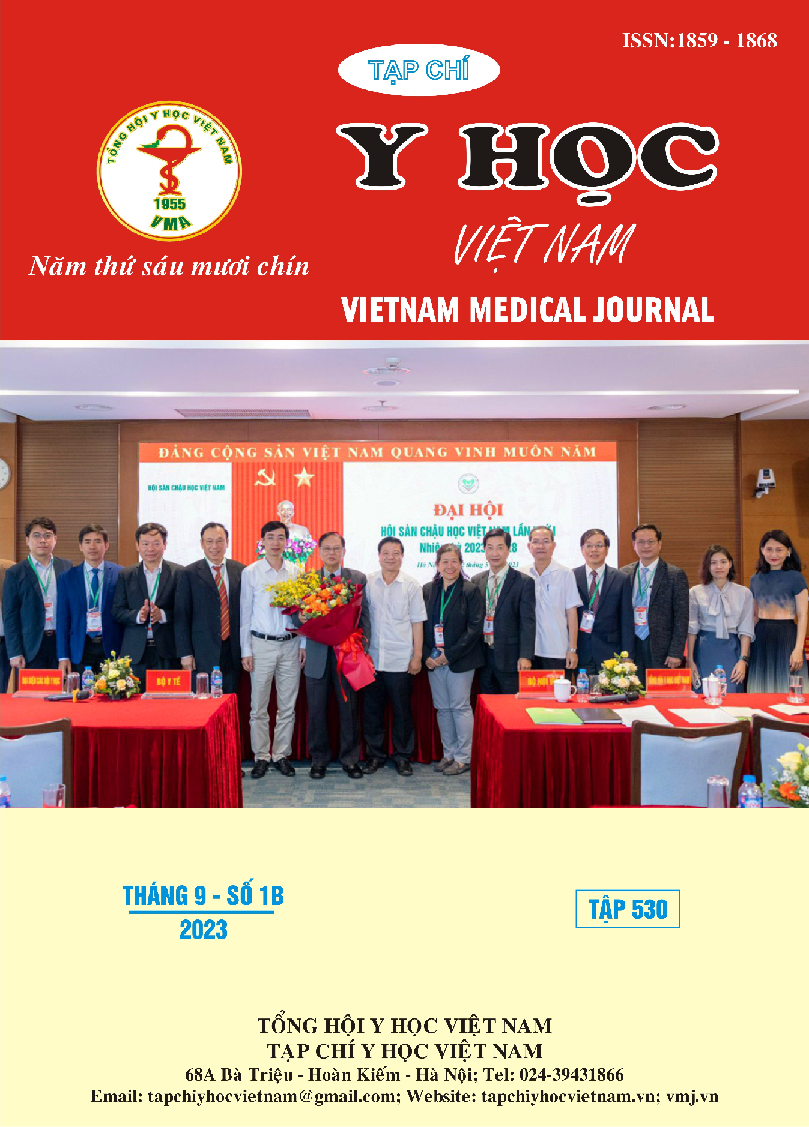OVERWEIGHT - OBESITY AND SOME RELEVANCE FACTORS OF NUTRITIONAL CARE AMONG PRESCHOOL CHILDREN IN HANOI
Main Article Content
Abstract
Objective: The study aims to assess the status of overweight and obesity (TCBP) and some factors related to nutrition and exercise care of preschool children aged 24-59 months in Dong Anh and Dong Da districts. , Hanoi. Methods: A cross-sectional study was conducted on 1993 preschool students aged 24-59 months in Dong Anh and Dong Da districts, Hanoi. Results: The prevalence of overweight and obesity of children aged 24-59 months in 2 districts was 8.03% and 4.16%, respectively. The father's BMI ≥ 23, the child's risk of obesity is 1.49 times higher, the difference is statistically significant (p<0.01). The mother's BMI ≥ 23 also increased the risk of child obesity 2.11 times (p<0.01). Maternal weight gain during pregnancy ≥ 12kg increases the risk of overweight-obesity child by 1.77 times. Children born by caesarean section had a 1.53-fold higher risk of overweight-obesity than those born vaginally (p<0.01). Children with a birth weight of 3500-4000g have a 1.53 times higher risk of overweight-obesity compared with children with a birth weight of 2500-3500g (p<0.01). Children who were not breastfed had a 1.59 times higher risk of obesity than breastfed children (p<0.05). Children who were given extra formula milk in the first 6 months had a 1.45 times higher risk of obesity than children who did not drink powdered milk in the first 6 months (p<0.05). Children who eat complementary foods before 6 months have 1.53 times higher risk of obesity than children who eat supplements after 6 months (p<0.01). Children who were weaned before 24 months had a 1.39 times higher risk of TCBP than children who were weaned after 24 months (p<0.05). Conclusions: Overweight and obesity in preschool children in Dong Anh and Hoan Kiem districts is related to high BMI of parents, high birth weight of children, inadequate nutritional care such as early complementary feeding, early weaning.
Article Details
Keywords
overweight, obesity, Dong Anh district, Hoan Kiem district, nutritional care.
References
2. Đỗ Thị Phương Hà and Lê Bạch Mai, Thực trạng thừa cân béo phì ở người trưởng thành giai đoạn 2011-2015. Chiến lược quốc gia dinh dưỡng giai đoạn 2011-2015. 2015.
3. Williams, E.P., et al., Overweight and Obesity: Prevalence, Consequences, and Causes of a Growing Public Health Problem. Curr Obes Rep, 2015. 4(3): p. 363-70.
4. Viện Dinh dưỡng Quốc gia, Số liệu thống kê về tình trạng dinh dưỡng trẻ em qua các năm. 2017.
5. Hoàng Đức Phúc, Trần Quang Trung, and và cs (2020), Tình trạng dinh dưỡng của trẻ em dưới 5 tuổi tại một số quận huyện ở Hà nội năm 2019. Tạp chí Y học dự phòng, 2020. 30 (6): p. 53-58.
6. Nguyễn Thị Hải Yến, Nguyễn Thị Kiều Anh, and v.c. sự, Thực trạng thừa cân béo phì và yếu tố liên quan tại một số quận huyện của Hà Nội năm 2019. Tạp chí Y học dự phòng, 2020. 3(5): p. 96-98.
7. Azad, M.B., et al., Infant Feeding and Weight Gain: Separating Breast Milk From Breastfeeding and Formula From Food. Pediatrics, 2018. 142(4).
8. Dieu, H.T., et al., Prevalence of overweight and obesity in preschool children and associated socio-demographic factors in Ho Chi Minh City, Vietnam. Int J Pediatr Obes, 2007. 2(1): p. 40-50.


